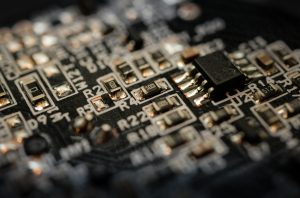Why Use Platinum Foil for High-Tech Electronics?
Transistors are the basic building blocks of modern electrical systems, performing extremely rapid current switching and efficient signal amplification. Crucially, they can also be engineered in tiny formats; down to the nanometre (nm) range. Their combined size and efficiency effectively heralded the end of bulky vacuum tubes and ushered in a new era of microelectronics. Yet their exponential miniaturisation puts a key emphasis on material purity, with some semiconducting devices requiring impurity limits as stringent as one part per billion (ppb).
High-purity platinum foil is routinely used in microelectronics fabrication due to its ductility, inertness, and favourable conductivity. Before the rise of integrated circuits (ICs), platinum was typically reserved for electrical contacts owing to its negligible reactivity. This led to long-lasting, non-oxidising elements that were unaffected by high operating temperatures. These same properties have made platinum foil an invaluable material for high-technology electronic devices.

Case Study: Auxiliary Electrodes for Supercapacitors
Voltametric analysis explores the half-cell reactivity of a given analyte, typically using a triple electrode cell, comprising working, auxiliary, and reference electrodes. Platinum wire has long been used as an auxiliary–or counter—electrode as it allows for a stable current flow without impacting the chemistry of the solution under examination. When carrying out bulk electrolytic analysis, a larger auxiliary is required to support high currents. Platinum foil is increasingly used as the auxiliary electrode as it offers a larger surface area than that of a simple platinum wire. Thus the charge injection capacitance is increased.
Platinum foil is ideal for enhancing electrical capacity in a wide range of microelectronic devices. It remains a key material for on-chip capacitors as ohmic contacts, and as an intermediary in multilayer ceramic capacitors. But platinum foil is also desirable for supercapacitor research and development (R&D).
Electrochemical supercapacitors are based on the same principles of voltammetry outlined above. However, they exhibit ultra-high capacitance with lower voltage limits due to the migration of ions between two isolated nonreactive electrodes in electrolytic suspension. This presents several advantages over existing energy storage devices, despite discharging power comparatively quickly. Rapid charging, for example. Or higher stability power supplies.
Platinum Foil from XRF Scientific
At XRF Scientific, we supply precision platinum products for a wide range of basic electronics and high-technology applications. If you would like to learn more about the applications and specifications of our high-purity platinum foils, why not contact a member of the team today?









